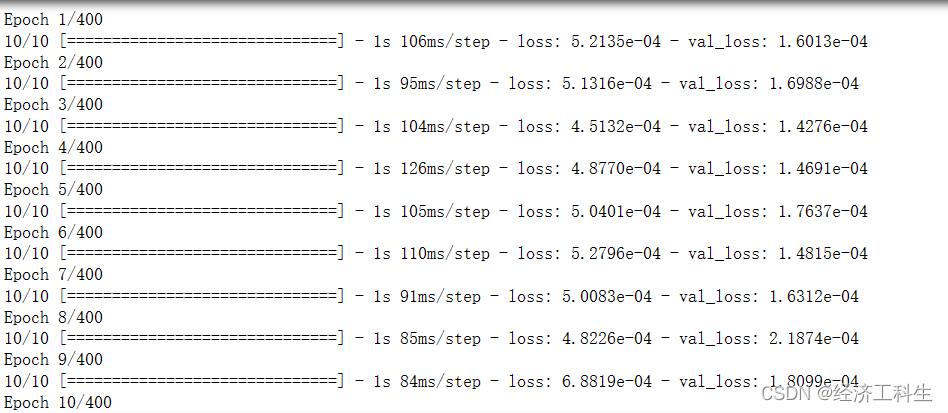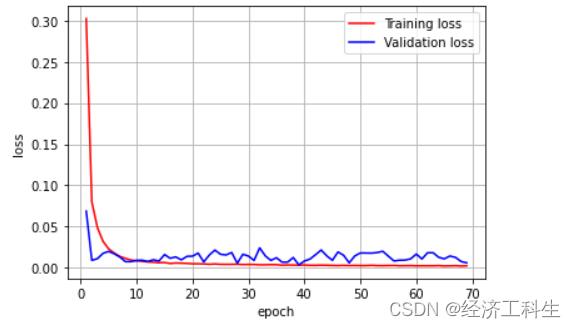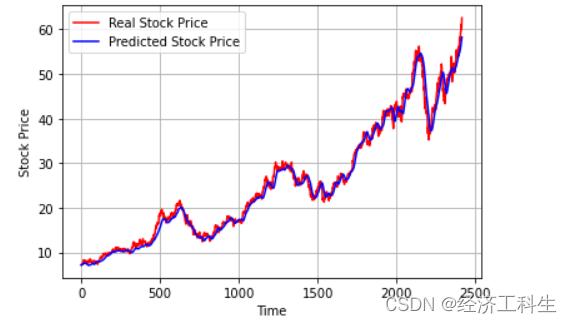基于多头注意力机制LSTM股价预测模型
Posted 经济工科生
tags:
篇首语:本文由小常识网(cha138.com)小编为大家整理,主要介绍了基于多头注意力机制LSTM股价预测模型相关的知识,希望对你有一定的参考价值。
1、多头注意力机制层的构建
class MultiHeadAttention(tf.keras.layers.Layer):
def __init__(self, num_heads, d_model):
super(MultiHeadAttention, self).__init__()
self.num_heads = num_heads
self.d_model = d_model
assert d_model % self.num_heads == 0
self.depth = d_model // self.num_heads
self.wq = tf.keras.layers.Dense(d_model)
self.wk = tf.keras.layers.Dense(d_model)
self.wv = tf.keras.layers.Dense(d_model)
self.dense = tf.keras.layers.Dense(d_model)
def split_heads(self, x, batch_size):
"""Split the last dimension into (num_heads, depth).
Transpose the result such that the shape is (batch_size, num_heads, seq_len, depth)
"""
x = tf.reshape(x, (batch_size, -1, self.num_heads, self.depth))
return tf.transpose(x, perm=[0, 2, 1, 3])
def scaled_dot_product_attention(self, q, k, v, mask):
"""Calculate the attention weights.
q, k, v must have matching leading dimensions.
k, v must have matching penultimate dimension, i.e.: seq_len_k = seq_len_v.
The mask has different shapes depending on its type(padding or look ahead)
but it must be broadcastable for addition.
Args:
q: query shape == (..., seq_len_q, depth)
k: key shape == (..., seq_len_k, depth)
v: value shape == (..., seq_len_v, depth_v)
mask: Float tensor with shape broadcastable
to (..., seq_len_q, seq_len_k). Defaults to None.
Returns:
output, attention_weights
"""
matmul_qk = tf.matmul(q, k, transpose_b=True) # (..., seq_len_q, seq_len_k)
# scale matmul_q
# scale matmul_qk
dk = tf.cast(tf.shape(k)[-1], tf.float32)
scaled_attention_logits = matmul_qk / tf.math.sqrt(dk)
# add the mask to the scaled tensor.
if mask is not None:
scaled_attention_logits += (mask * -1e9)
# softmax is normalized on the last axis (seq_len_k) so that the scores
# add up to 1.
attention_weights = tf.nn.softmax(scaled_attention_logits, axis=-1) # (..., seq_len_q, seq_len_k)
output = tf.matmul(attention_weights, v) # (..., seq_len_q, depth_v)
return output, attention_weights
def call(self, v, k, q, mask):
batch_size = tf.shape(q)[0]
q = self.wq(q) # (batch_size, seq_len, d_model)
k = self.wk(k) # (batch_size, seq_len, d_model)
v = self.wv(v) # (batch_size, seq_len, d_
# split heads
q = self.split_heads(q, batch_size) # (batch_size, num_heads, seq_len_q, depth)
k = self.split_heads(k, batch_size) # (batch_size, num_heads, seq_len_k, depth)
v = self.split_heads(v, batch_size) # (batch_size, num_heads, seq_len_v, depth)
# scaled dot product attention
scaled_attention, attention_weights = self.scaled_dot_product_attention(q, k, v, mask)
# concatenation of heads
scaled_attention = tf.transpose(scaled_attention, perm=[0, 2, 1, 3]) # (batch_size, seq_len_q, num_heads, depth)
concat_attention = tf.reshape(scaled_attention,
(batch_size, -1, self.d_model)) # (batch_size, seq_len_q, d_model)
# final linear layer
output = self.dense(concat_attention) # (batch_size, seq_len_q, d_model)
return output2、构建股价预测模型
# Stock price prediction model
class StockPricePredictionModel(tf.keras.Model):
def __init__(self, num_heads, d_model, num_lstm_units):
super(StockPricePredictionModel, self).__init__()
self.num_heads = num_heads
self.f_model = d_model
self.num_lstm_units = num_lstm_units
self.multi_head_attention = MultiHeadAttention(self.num_heads, self.d_model)
self.lstm = tf.keras.layers.LSTM(self.num_lstm_units, return_sequences=True)
self.dense = tf.keras.layers.Dense(1)
def call(self, inputs, mask):
attention_output = self.multi_head_attention(inputs, input, input, mask)
lstm_output = self.lstm(attention_output)
prediction = self.dense(lstm_output)
return prediction
model = StockPricePredictionModel(num_heads=9, d_model=256, num_lstm_units=128)3、模型训练与结果



以上是关于基于多头注意力机制LSTM股价预测模型的主要内容,如果未能解决你的问题,请参考以下文章